Ducks are not only one of the most lovely species of waterfowl, they are also among the most beautiful birds in existence.
One of many reasons ducks are so picturesque is their plumage. And while they come in many colors and color combinations, ducks with white coloration will always be some of the finest.
In line with our claims about white ducks, we discuss 8 white duck breeds in the rest of this article.
Table of Contents
White Crested Duck
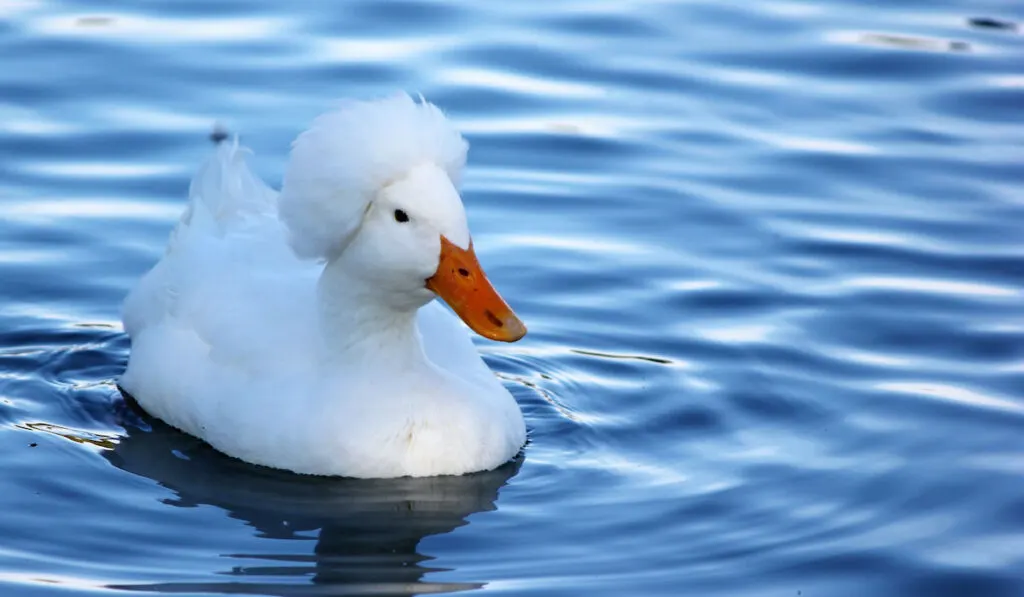
The Crested duck is probably one of the most interesting white ducks you will ever see.
Although there is no firm consensus, the origins of Crested ducks dates back to the 17th century. Then around the mid-19th century, Crested ducks were introduced into the United States.
Crested ducks come in many colors, including white. The white variants are typified by their white plumage and orange legs and bills.
Although White Crested Ducks appear similar to Pekin ducks, the funky-looking crest on the top of their heads makes them distinct.
White Crested Ducks typically produce about 100-130 eggs each year. But beyond being raised for eggs, they can also be kept as pets and bred for meat.
American Pekin

Although they are called American Pekins, these ducks were brought into the United States in the 19th century from China. American Pekins are one of the larger breeds of domestic duck, and you can find them worldwide.
Like Crested Ducks, American Pekins have orange feet, orange beaks, and white plumage. But the absence of a crest makes the difference.
American Pekins were selectively bred for abundant meat and for greater egg production. This is why they are kept primarily for their meat and eggs.
American Pekins also make good pets because they are calm, warm, and friendly. While their immunity is pretty remarkable, it is best to avoid exposing them to extreme conditions.
In a year, American Pekins can lay as many as 200 eggs. The eggs are either tinted or white, and it takes about 28 days for the eggs to hatch.
You may not find a Pekin incubating her eggs, so you may have to do it yourself.
Canard de Bourbourg
The Canard de Bourbourg may also be called Bourbourg duck. It is a breed of domestic ducks indigenous to the city of Bourbourg in France.
Bourbourg ducks have pink beaks, orange legs, and white plumage. Although they are reared for their meat, owners can also profit from their eggs. The average Bourbourg duck can produce over 50 eggs in a year.
Bourbourg ducks were on the verge of disappearing around the mid-20th century. However, thanks to the relentless effort of breeders, the Bourbourg duck population has continued to rise since 1998.
Mulard
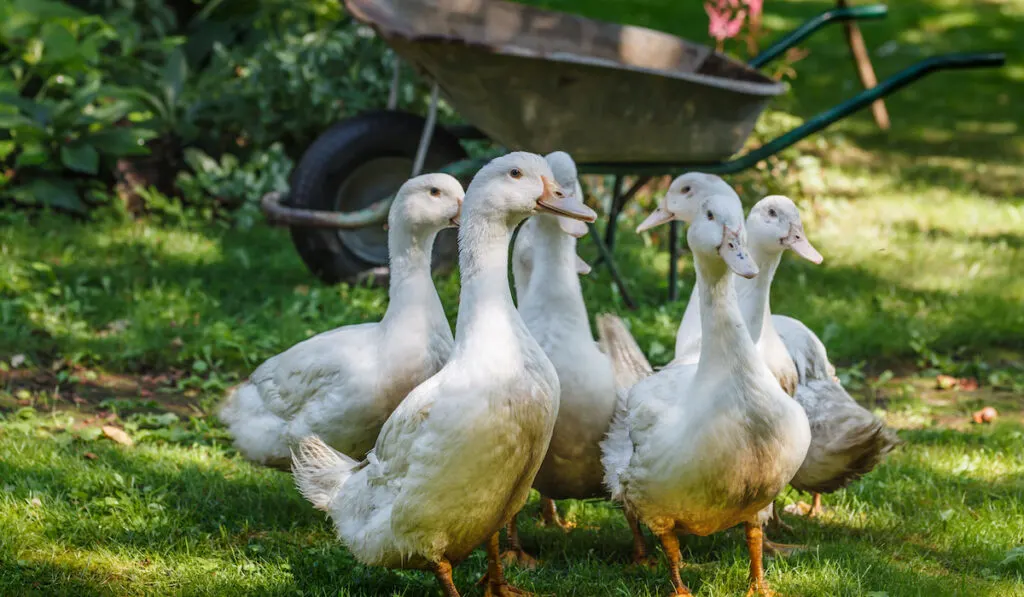
The Mulard is a cross between the Domestic Muscovy and the Domestic Mallard. Although this cross can occur naturally, it is achieved primarily with artificial insemination.
Mulards usually have white plumage, which may be solid or spotted. They also have bright orange or yellow feet and bright orange or pink bills.
American Pekins are the Mallard breed regularly used when procreating a Mulard. A Mulard bred from a Pekin duck and Muscovy drake is called Moulard or Mulard.
Conversely, Mulard offspring from a Muscovy duck and Pekin drake are called Hinnies. These Hinnies tend to be smaller in size.
Mulards are reared mainly for their foie gras and meat, and they are sterile.
Bali Duck
Bali ducks are also known as Balinese Crested ducks, and they are indigenous to the Indonesian island of Bali. Bali ducks are one of the oldest breeds of domestic ducks. They come with bright orange bills, orange feet, and white plumage.
Bali ducks are kept primarily for ornamental purposes or as pets. And they make a great addition to a family or farm because of their friendly nature.
Bali ducks are a bit similar to Indian Runner ducks, with the distinction being the crest atop the head of Bali ducks.
Although Bali ducks are excellent egg layers producing between 120 and 150 white to blue-green eggs each year, they are not kept for commercial purposes. Due to their small size, they are not an ideal source of meat.
German Pekin
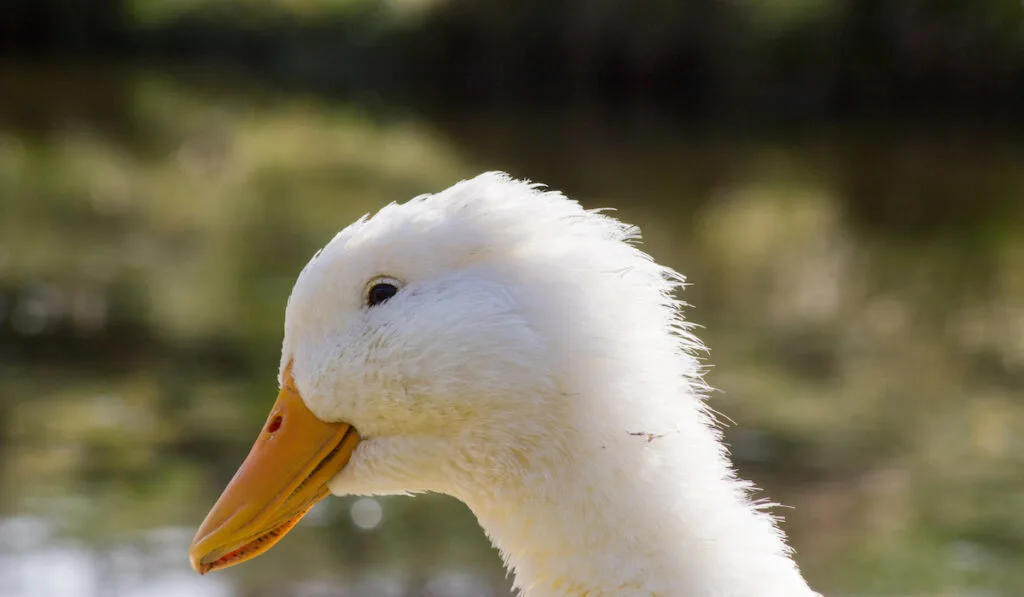
The German Pekin is indigenous to Japan and China, even though it is named after Germany. The German Pekin and American Pekin differ from one another in terms of appearance and breeding.
While the American Pekin comes from crossing a Mallard with a British Aylesbury duck, the German Pekin comes from crossing a Mallard with white Japanese ducks.
The German Pekin has white plumage with a slight yellow tint. They are primarily bred for their meat. However, their egg yield is pretty high too. For this reason, they are terrific dual-purpose ducks.
German Pekins are kept mainly as pets and for ornamental purposes. They currently listed as endangered.
Call Duck
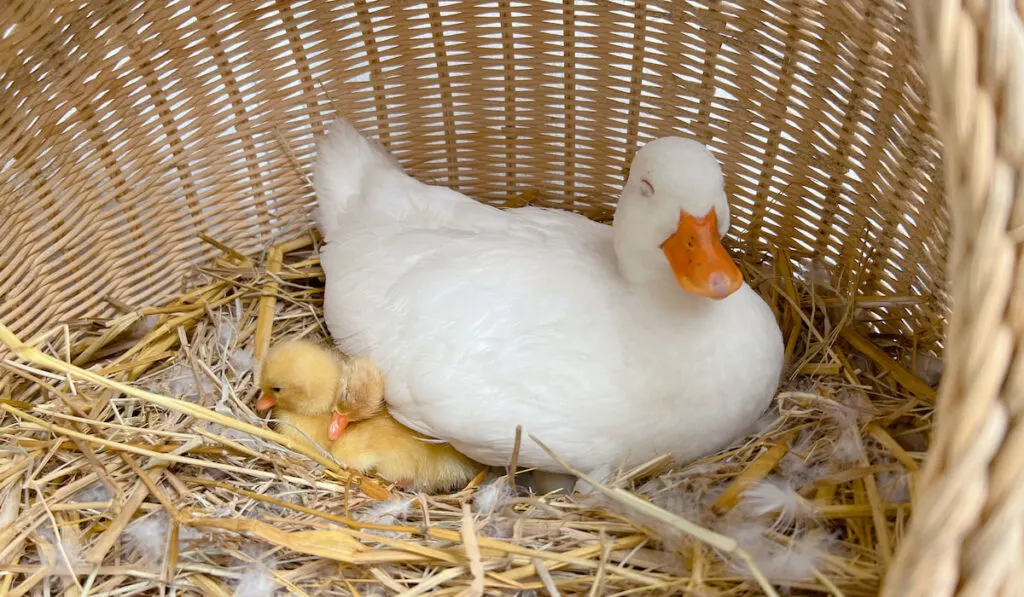
Call ducks are indigenous to the Netherlands and were once used as decoy or coy ducks. They are said to be the smallest breed of domestic duck.
Call ducks have short bills, short bodies, and white plumage, with the average height of a call duck being about 13.5 inches. Call ducks are active, cute, and friendly, making them excellent pets.
Beyond being pets, Call ducks are also fitting for various ornamental purposes.
As ducklings, the plumage of a Call duck is yellow. But once they reach adulthood at 8-12 months, the color of their plumage changes to white.
Aylesbury Duck
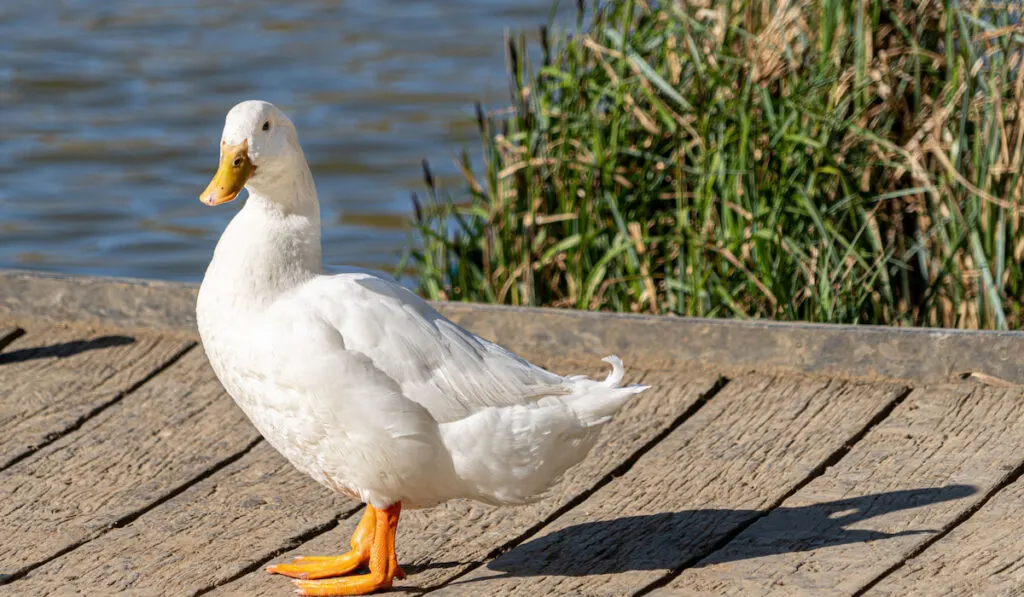
Although the origins of the Aylesbury duck are unknown, it gets its name from a town in the Buckingham region in England, where it became popular in the 19th century.
Aylesbury ducks have pink bills and orange feet with pure white plumage. They have long necks similar to that of a swan.
Aylesbury ducks are kept mainly for ornamental purposes and meat, which is mild-flavored. They are regular egg producers and fast growers. They also lay eggs during the winter.
The rearing of Aylesbury ducks began to decline at the start of the 20th century. The reason being the introduction of Pekin ducks into Britain at the end of the 19th century.
In the United States, Aylesbury ducks were introduced in the mid-19th century but were never popular. The Aylesbury duck is currently an endangered duck breed in the US.
